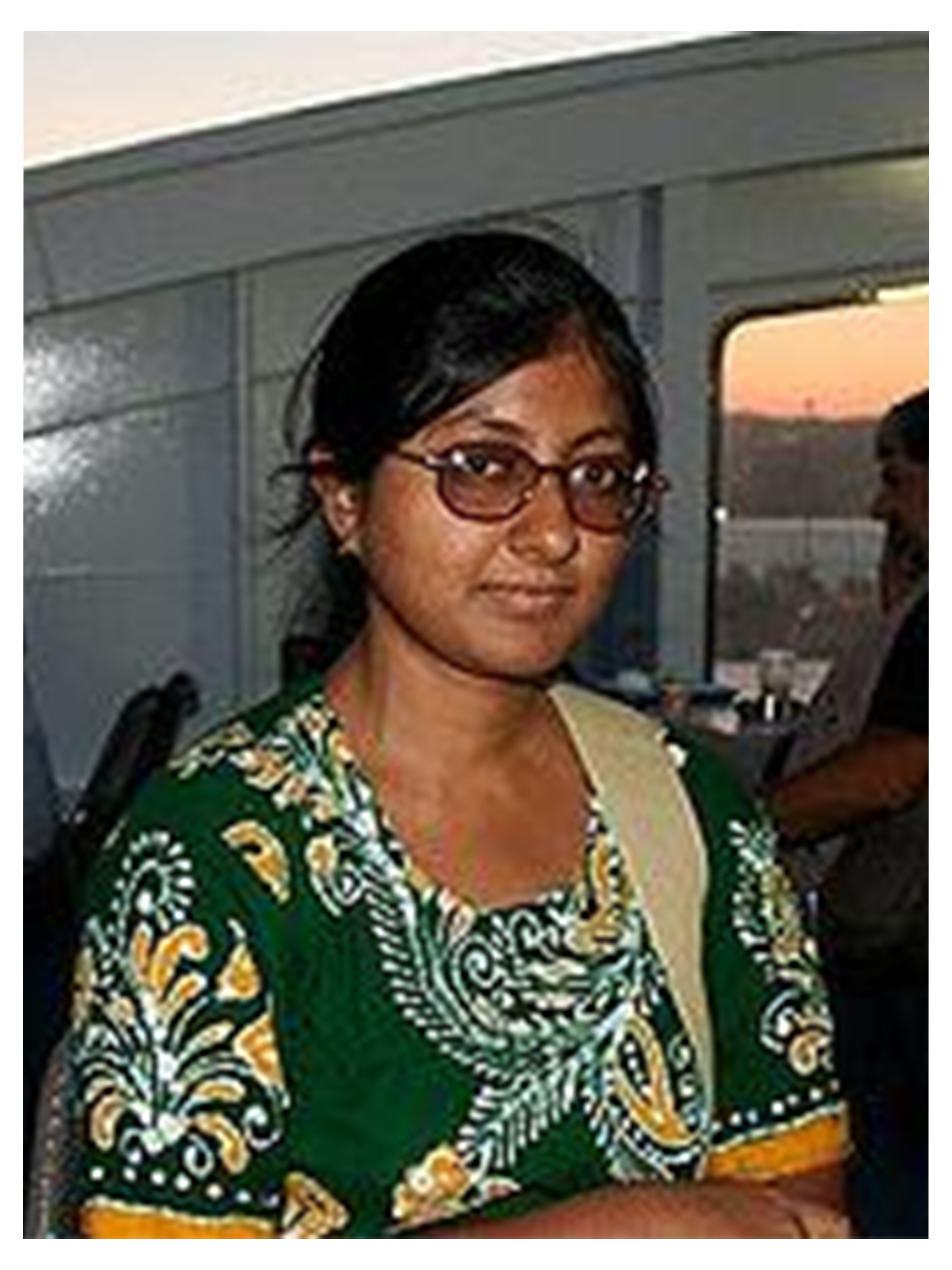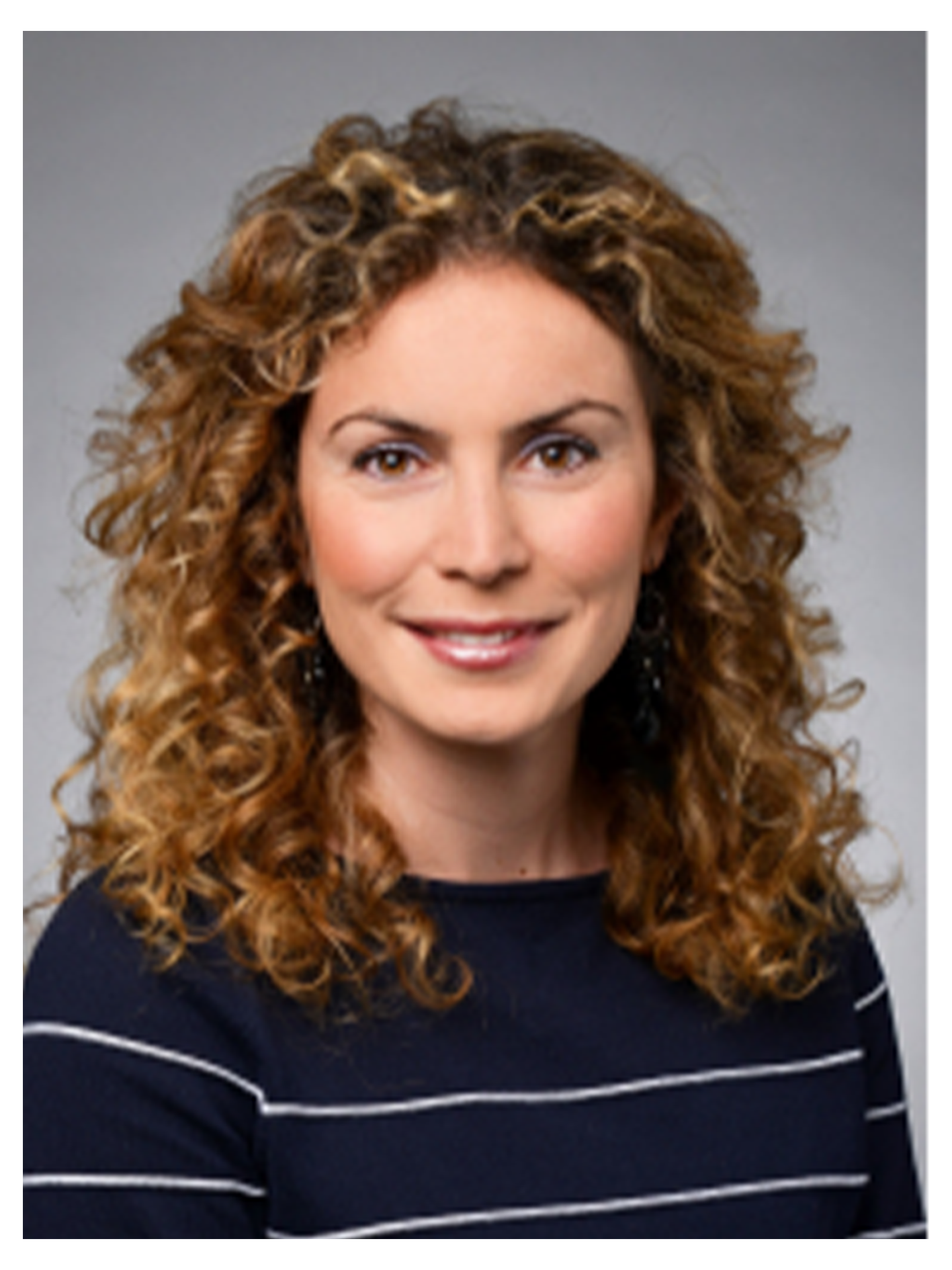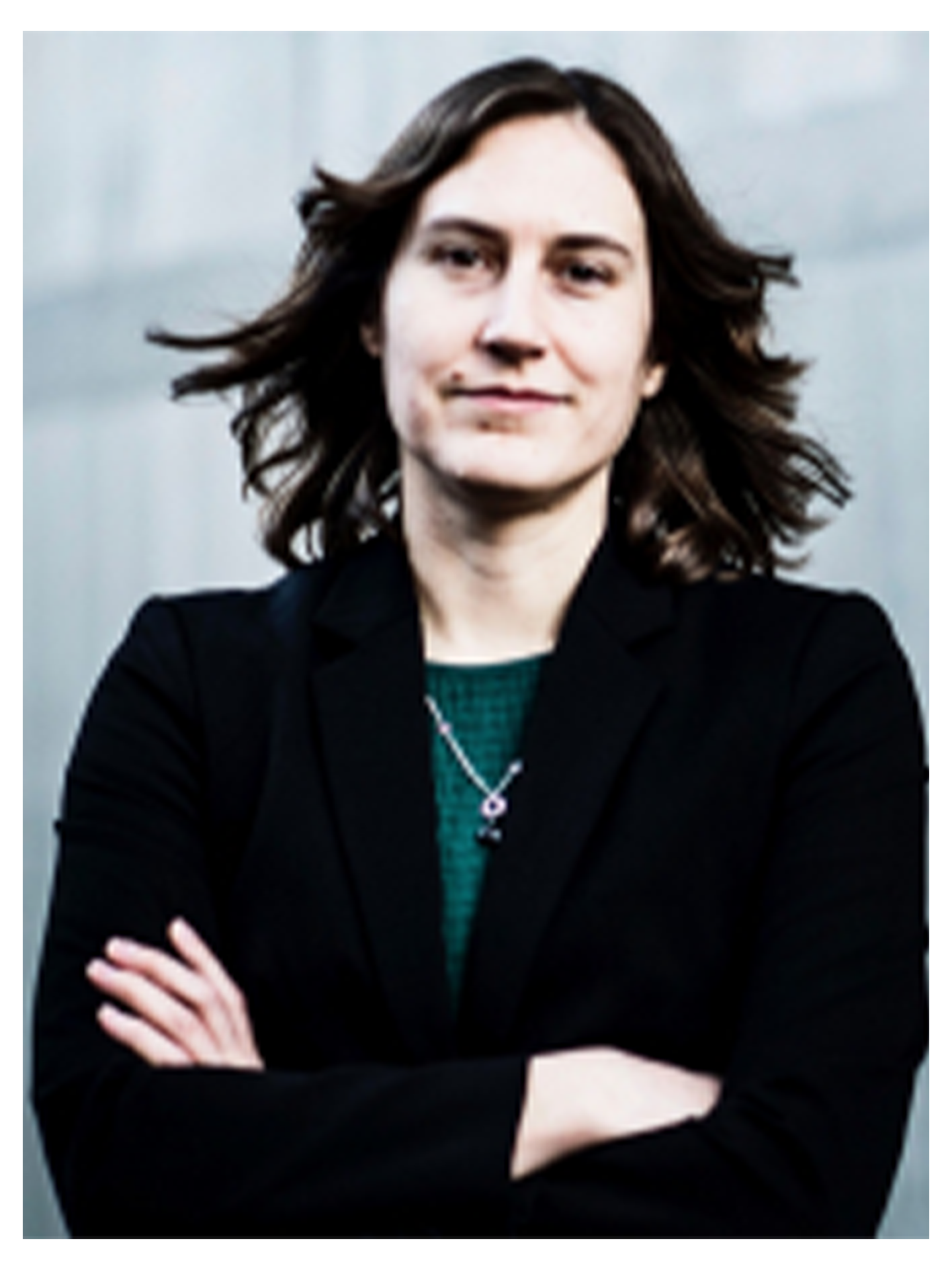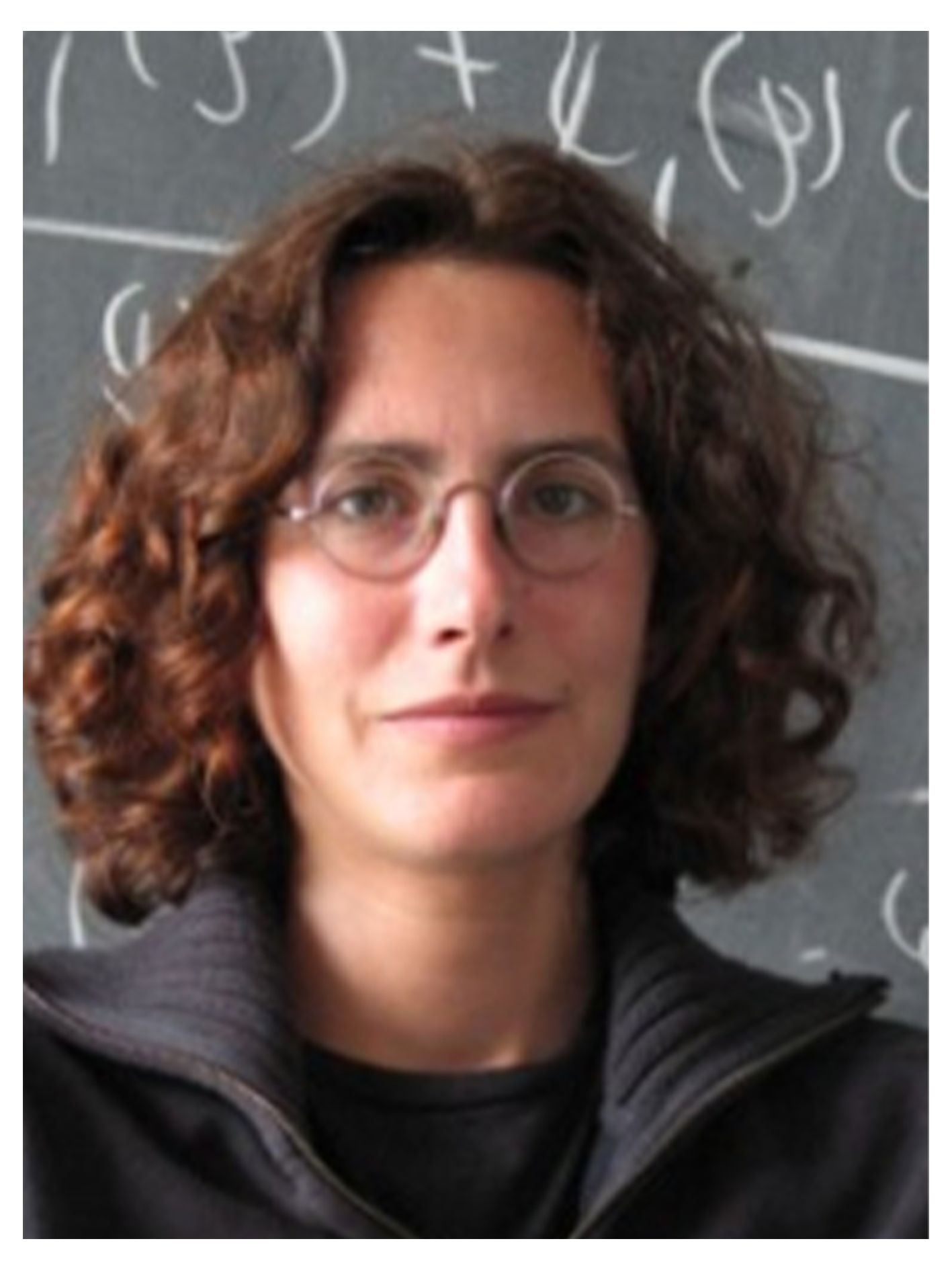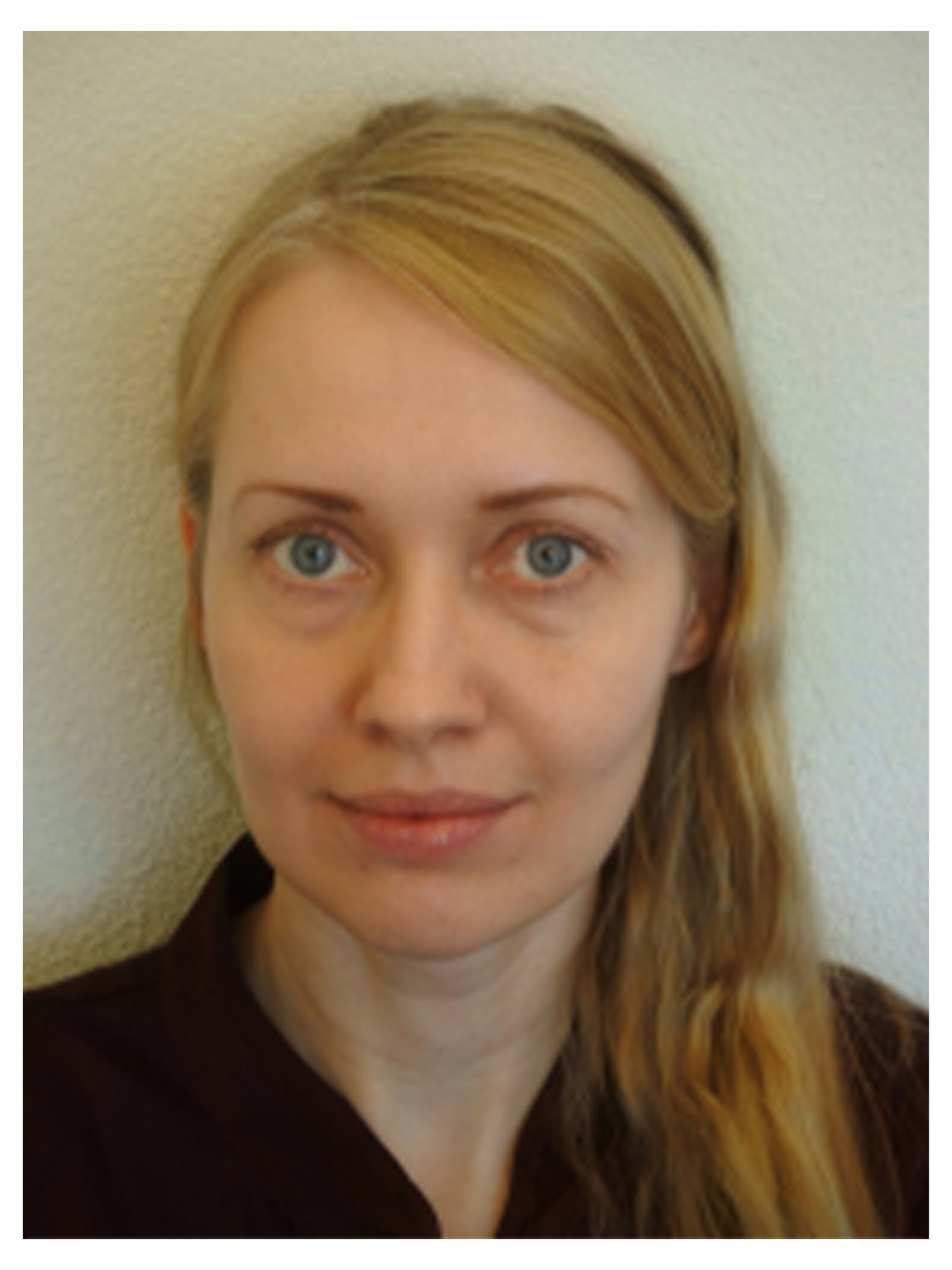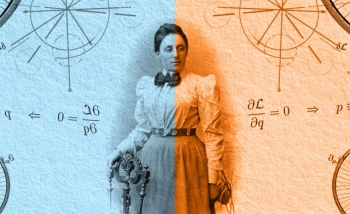The Simons Emmy Noether Fellows Program at Perimeter honours the legacy of Emmy Noether, a brilliant scientist who made indelible contributions to the landscape of physics and mathematics.
The fellowships support early- to mid-career women researchers by enabling them to visit Perimeter for extended periods, where they can enjoy uninterrupted research time, forge fruitful new collaborations, and accelerate their scientific careers. To ensure the Fellows have ample opportunity to make the most of their scientific stay, the fellowships also offer logistical support by arranging teaching buyouts with home institutions, providing nearby accommodation, and arranging childcare.
This year’s cohort of eight Fellows is ready to make breakthroughs in a diversity of fields, from string theory and quantum field theory to black holes and cosmology.
Announcing the 2019/20 Simons Emmy Noether Fellows:
|
Sayantani Bhattacharyya is a professor of physics at the School of Physical Sciences, National Institute of Science Education and Research, in Orisha, India. Her current research centres on the study of black holes in large spacetime dimensions. Previously, she developed novel perturbative techniques to solve classical gravity equations and established a connection between the equations of motion of classical gravity in anti-de Sitter space and the equations of fluid dynamics. While at Perimeter, Bhattacharyya plans to apply fluid dynamical analysis around the concept of entropy to higher derivative theories of gravity. |
Selected papers by Sayantani Bhattacharyya:
• Nonlinear fluid dynamics from gravity
• Hydrodynamics from charged black branes
• A membrane paradigm at large D
|
Cecilia Chirenti is a strong gravity theorist based at Universidade Federal do ABC in Brazil. Her research focuses on gravitational waves, the perturbative analysis of background spacetimes, and the properties of quasinormal modes of black holes, neutron stars, and other exotic objects. With a particular interest in connecting theory to future observations, Chirenti is a member of the 3G Science Case Team for third generation gravitational wave detectors. As a Simons Emmy Noether Fellow, Chirenti aims to collaborate with Perimeter researchers to glean new insights from gravitational wave data. |
Selected papers by Cecilia Chirenti:
• Gravitational waves from f-modes excited by the inspiral of highly eccentric neutron star binaries
• Did GW150914 produce a rotating gravastar?
• Fundamental oscillation modes of neutron stars: Validity of universal relations
|
Lavinia Heisenberg is a theoretical physicist and cosmologist based at ETH Zurich. Her research investigates generalizations of gravity theory and the interplay between particle physics and cosmology, with a focus on the fundamental properties of field theories of spacetime. As a Simons Emmy Noether Fellow, Heisenberg aims to explore the application of particle physics methods to cosmological contexts and tests of gravity theories with gravitational waves and large-scale structure. |
Selected papers by Lavinia Heisenberg:
• A systematic approach to generalisations of general relativity and their cosmological implications
• Dark energy in the swampland
• Coincident general relativity
• Generalization of the Proca action
|
Wei Li is a professor at the Institute of Theoretical Physics, Chinese Academy of Sciences. Her research explores the quantum gravity aspects of string theory and the mathematical physics that arises in string theory, quantum field theory, and quantum gravity in general. At Perimeter, Li plans to study the mathematical structures and relationships of string theory’s symmetry structures and investigate their applications to quantum field theory, quantum gravity, and string theory itself. |
Recent papers by Wei Li:
• Wilson line networks in p-adic AdS/CFT
• Twin-plane-partitions and N=2 affine Yangian
• The supersymmetric affine Yangian
|
Katherine (Katie) Mack is an astroparticle physicist based at North Carolina State University whose research focuses on new approaches to the fundamental nature of dark matter. She is particularly interested in investigating the small-scale behaviour of dark matter and how we can use it to illuminate dark matter’s fundamental nature. Mack is a member of the CYGNUS dark matter detector collaboration. As a Simons Emmy Noether Fellow, Mack plans to explore key questions in dark matter phenomenology and early universe physics. |
Selected papers by Katie Mack:
• Bounds on extra dimensions from micro black holes in the context of the metastable Higgs vacuum
• Dark matter annihilation in the circumgalactic medium at high redshifts
• Dark matter annihilation in the first galaxy halos
|
Catherine Meusburger is a quantum gravity theorist based at Friedrich-Alexander University Erlangen-Nürnberg. Her research focuses on topological quantum field theories with defects and Kitaev lattice models, with a particular interest in how these theories relate to quantum gravity. Previously a postdoctoral fellow at Perimeter and returning as a Simons Emmy Noether Fellow, Meusburger looks forward to rich collaborations with mathematical physicists and condensed matter researchers during her fellowship. |
Recent papers by Catherine Meusburger:
• Quantum groups and noncommutative spacetimes with cosmological constant
• AdS Poisson homogeneous spaces and Drinfel'd doubles
• Kitaev lattice models as a Hopf algebra gauge theory
| Monika Mościbrodzka is an assistant professor in the Department of Astrophysics at Radboud University who works on imaging the event horizons of black holes, strong gravity, accretion physics, and numerical methods in physics and astrophysics. She has done extensive work in theoretical black hole physics modelling, incorporating multiwavelength observations of black holes and their environments into her research. While at Perimeter, Mościbrodzka (who is a member of the Event Horizon Telescope (EHT) collaboration) plans to analyze data from the EHT, develop a framework for comparing theoretical predictions to observational polarimetric data, and constrain magnetized plasma models around supermassive black holes. |
Selected papers by Monika Mościbrodzka:
• IPOLE – Semianalytic scheme for relativistic polarized radiative transport
• Faraday rotation in GRMHD simulations of the jet launching zone of M87
• General relativistic magnetohydrodynamical simulations of the jet in M87
• Radiative models of Sgr A* from GRMHD simulations
| Sylvie Paycha is a professor in the Department of Mathematics at the University of Potsdam, on leave from the University Clermont-Auvergne, working at the interface of mathematics and physics. Inspired by ideas and concepts from quantum field theory, her research centres on regularization and renormalization methods, with particular focus on an algebraic approach to locality she recently developed with collaborators. Paycha has authored two books and in 2014 was named a “Chevalier de la Légion d'Honneur” in France. While at Perimeter, Paycha plans to investigate new mathematical approaches relevant to Feynman diagrams, geometric aspects of regularity structures, and new insights in the renormalization group. |
Selected papers by Sylvie Paycha:
• Renormalisation and locality: Branched zeta values
• An algebraic formulation of the locality principle in renormalisation
• Algebraic Birkhoff factorization and the Euler-Maclaurin formula on cones
The Simons Foundation’s mission is to advance the frontiers of research in mathematics and the basic sciences. Co-founded in New York City by Jim and Marilyn Simons, the foundation exists to support basic — or discovery-driven — scientific research undertaken in the pursuit of understanding the phenomena of our world. The Simons Foundation Mathematics and Physical Sciences division supports research in mathematics, theoretical physics, and theoretical computer science by providing funding for individuals, institutions, and science infrastructure.
About PI
Perimeter Institute is the world’s largest research hub devoted to theoretical physics. The independent Institute was founded in 1999 to foster breakthroughs in the fundamental understanding of our universe, from the smallest particles to the entire cosmos. Research at Perimeter is motivated by the understanding that fundamental science advances human knowledge and catalyzes innovation, and that today’s theoretical physics is tomorrow’s technology. Located in the Region of Waterloo, the not-for-profit Institute is a unique public-private endeavour, including the Governments of Ontario and Canada, that enables cutting-edge research, trains the next generation of scientific pioneers, and shares the power of physics through award-winning educational outreach and public engagement.

